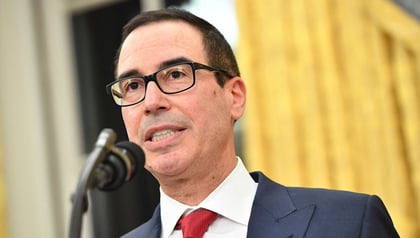Treasury Secretary Steven Mnuchin said Wednesday that he’d ask Congress for more money to sustain small businesses during the coronavirus pandemic if the administration issues all of the new $350 billion loan pool allotted under the Coronavirus Aid, Relief and Economic Security (CARES) act.
“One of the things I’ve heard is this small-business program is going to be so popular that we’re going to run out of our $350 billion,” he told CNBC’s “Squawk on the Street.”
“If that’s the case, I can assure you that will be top of the list for me to go back to Congress on,” Mnuchin told CNBC. “It has huge bipartisan support and we want to protect small business.”
New Treasury Guidance
Lawmakers have been itching for more guidance to ensure small businesses can tap the loans under Title IV of the law, which includes the Paycheck Protection Program among other provisions. They got what they wanted on Tuesday evening, when Treasury Secretary Steven Mnuchin released a rundown of the program.
Advisors, meanwhile, see the loans as lifelines and are busy digesting the PPP and how it can help them and their clients.
Senate Banking Committee Chairman Mike Crapo, R-Idaho, pressed the Treasury Department and Federal Reserve in a letter to provide guidance on Title IV of the law, which was enacted Friday.
Mnuchin said the first loans will start to flow this Friday.
Advisors Weigh In
Treasury’s guidance couldn’t come soon enough for advisor Leon LaBrecque. “I have been overwhelmed by PPP questions,” says LaBrecque, chief growth officer at Sequoia Financial Group in Troy, Michigan. He’d like to see Treasury set up a “central repository of stimulus information, like a clearinghouse.”
Samuel Boyd, senior vice president at Capital Asset Management Group, urges “nearly all businesses” with fewer than 500 employees to consider the PPP option.
The $2 trillion CARES Act provides $350 billion in funding for small-business loans through the SBA 7(a) loan program, Tony Wilkerson, president and CEO of NAGGL, the trade group for the SBA 7(a) lending industry, explained Tuesday on a webcast.









 April 01, 2020 at 11:33 AM
April 01, 2020 at 11:33 AM











